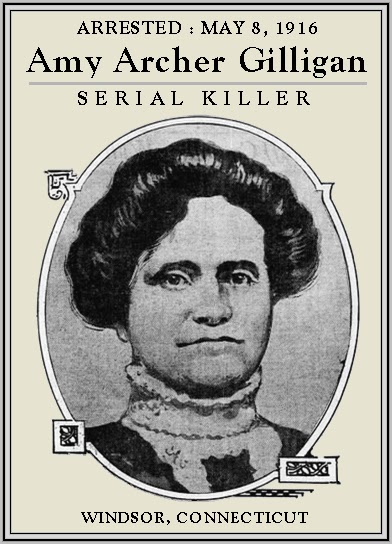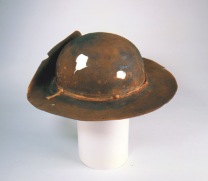The New York Times reported this week that the one upside to global warming is that the foliage in autumn is more vivid. The drought we’ve been suffering means leaves make a vivid shout out to fall and cling to the trees longer.
Today, as I wandered toward B.F. Clyde’s Cider Mill, I jumped off the highway to avoid an accident and took some winding roads through scorching hot foliage territory. Spicy reds, sunshine-ing yellows, and sparkler oranges. Thank you, global warming, I guess…?
By the time I got to the Cider Mill though, the trees were already bare. I guess it’s just a tidge cooler there.
Operating since 1881, Clyde’s is the only steam-powered mill still in operation. Six generations of the family have worked the press, and I was there to see the apple cider get made. They can make 500 gallons an hour of cider. That might seem like a lot to you, but when you figure how many people had the same idea as I did today, well, maybe not so much.
The apples are loaded into the chute as you see above. Today’s were Honey Crisp. The cider and baked goods all shift in flavor through the long season depending on the apples that are harvested and used.
Once the apples are washed, they are funneled into a grinder, making a really thick apple sauce. The sauce is raked, yes raked, four times and put on a rack, swung around and pressed until the liquid flows. The smell is just wonderful.
The engine room powers the machinery. This cider mill is a, wait for it, National Historic Mechanical Engineering Landmark, for all this original equipment. They have a little historical display, and I was most taken with the pamphlets and articles on prohibition, one extolling the virtues of drunkenness. What?
Well, Clyde’s makes 8 kinds of hard cider. I visited the tasting area, where a long line formed so that each of us could taste four of the 8.
While waiting, Mary became my guide for all things cider. She had tasted all these various styles of hard cider and knew all about the subtle flavor shifts as the apple harvests come in. What a palette!
Mary also clued me in to the apple cider donuts, which I admit are pretty outstanding. Who knew that a Honey Crisp donut would taste different from a Micun!
I’m most grateful to Mary for turning me on to Shagbark Syrup. Turkeywoods Farm was there selling various syrups they create from hickory trees. Without Mary’s deft guidance, I might have fallen for hickory nut syrup or the hickory ginger syrup. They are wonderful.
Shagbark. That’s the find!

Now with wine tastings, you have all these descriptors that distinguish the various nose, mouth feel, etc. You know how it goes.
Same thing for syrup. Shagbark Syrup has a complex flavor profile, blending woodsy, earthy, nutty, smoky, even honey overtones. This from the bark of the hickory tree. Not the nut, not the sap like a maple tree.
So yes, I’ll be eating bark with my French toast for some period of years to come. That’s how long it will take me to finish a bottle this size.
Okay, bark with some processing. It is boiled and then aged. Yes, age your cheese and your bark. Then the aged bark is blended with natural sugars. It’s divinely delicious.
And no trees are hurt in the process. The shagbark hickory tree naturally sheds its bark starting at age 7. The bark is harvested when it falls from the tree or carefully removed when loose.
We can thank the Connecticut Native American population, likely the Pequot, for this wonder. They drank tea prepared by steeping hickory bark in hot water, sweetened with honey. It’s supposed to help with arthritis. But who cares? It helps with my spirit.
So did my visit to nearby Enders Island, home to the St. Edwards retreat/monastery.

I watched rocks and water for a peaceful retreat of my own.





























 No wonder the Thunderbolt seized everyone’s imagination, extending loop-de-loops out over the water.
No wonder the Thunderbolt seized everyone’s imagination, extending loop-de-loops out over the water.

































 I knew about dogs that worked in the home by walking on treadmills that turned spits of meat in the fire., much as donkeys worked in mills to turn the gristmill. Velya showed us a picture of the now-extinct Turnspit Dogs, which she called household “slaves.” Indeed their lives were so bad, often forced to walk on hot coals to speed up their work, that the ASPCA was formed in response.
I knew about dogs that worked in the home by walking on treadmills that turned spits of meat in the fire., much as donkeys worked in mills to turn the gristmill. Velya showed us a picture of the now-extinct Turnspit Dogs, which she called household “slaves.” Indeed their lives were so bad, often forced to walk on hot coals to speed up their work, that the ASPCA was formed in response.

























 I liked the mineralogist,
I liked the mineralogist, 



 The Peabody’s work on dinosaurs provided source material for Godzilla, Jurassic Park, and Indiana Jones, based on the Yale explorer Hiram Bingham.
The Peabody’s work on dinosaurs provided source material for Godzilla, Jurassic Park, and Indiana Jones, based on the Yale explorer Hiram Bingham.








 It’s 1887, and Lizzie Wills has offered to take us through the house. Miss Lizzie is a maid in the
It’s 1887, and Lizzie Wills has offered to take us through the house. Miss Lizzie is a maid in the 

 Lizzie seemed much more interested in telling stories than complaining about her tiny room off the servants’ stairwell, the four flights she regularly had to run up and down, the 12 fireplaces she had to stoke, or the 7 bathrooms that needed cleaning.
Lizzie seemed much more interested in telling stories than complaining about her tiny room off the servants’ stairwell, the four flights she regularly had to run up and down, the 12 fireplaces she had to stoke, or the 7 bathrooms that needed cleaning.
 We first met in the art history building where refreshments were in a room that resembled a little, red schoolhouse, only really the little, red-chair school room.
We first met in the art history building where refreshments were in a room that resembled a little, red schoolhouse, only really the little, red-chair school room.







 Mrs. Gowdy was one of 60 deaths in the house between 1907 and 1917. Hmmm. Not all her victims were men. She convinced widows to leave their estates to her. Talk about buyer-beware!
Mrs. Gowdy was one of 60 deaths in the house between 1907 and 1917. Hmmm. Not all her victims were men. She convinced widows to leave their estates to her. Talk about buyer-beware!








 Robert Cox has gone where no man has gone before…well, that’s probably not true. But he’s done it well, compiling a history of pie in his book
Robert Cox has gone where no man has gone before…well, that’s probably not true. But he’s done it well, compiling a history of pie in his book 















 Pie tins. What I didn’t know is that the Frisbee was originally called the ‘Pluto Platter’, a tie-in to the craze from Pluto’s discovery. Which do you think works better–Frisbee or the Pluto Platter?
Pie tins. What I didn’t know is that the Frisbee was originally called the ‘Pluto Platter’, a tie-in to the craze from Pluto’s discovery. Which do you think works better–Frisbee or the Pluto Platter?






